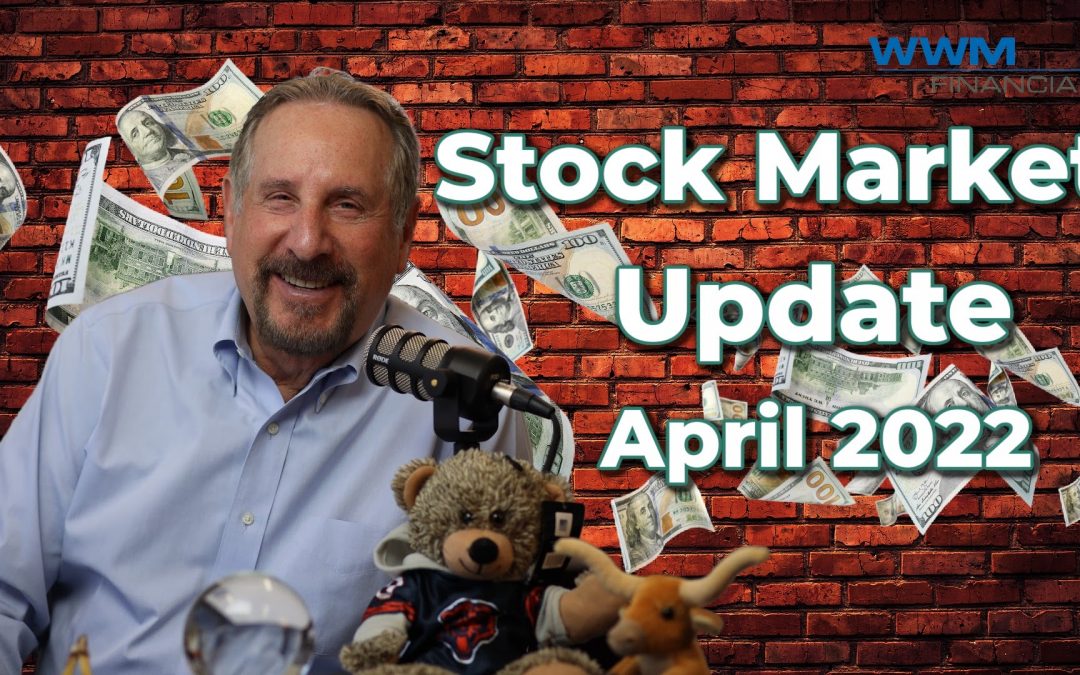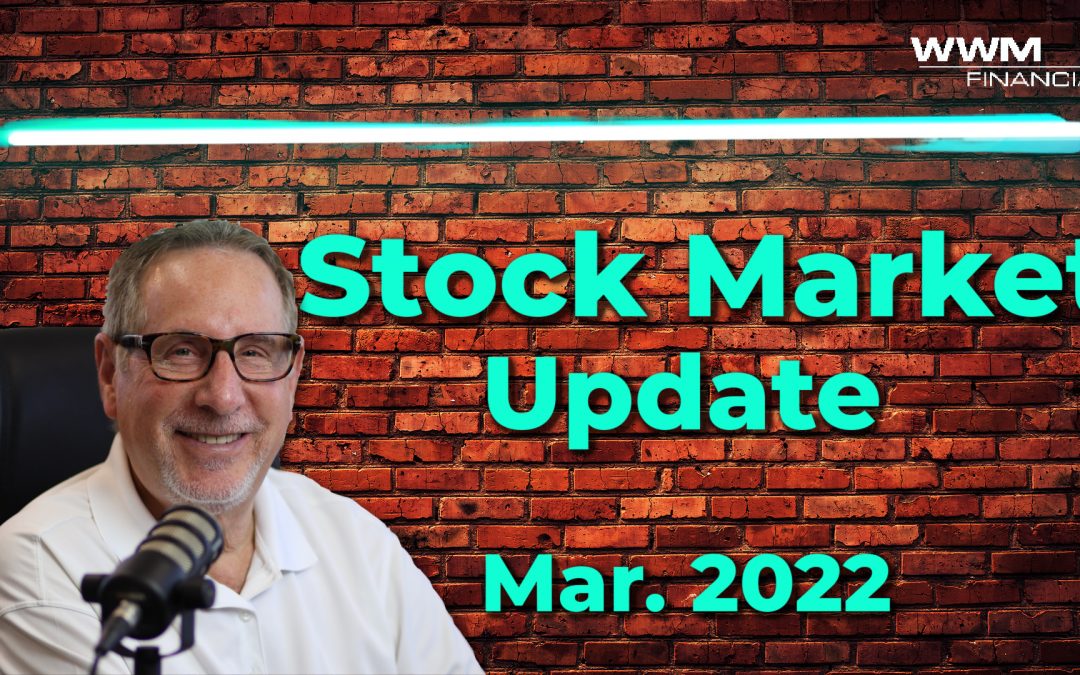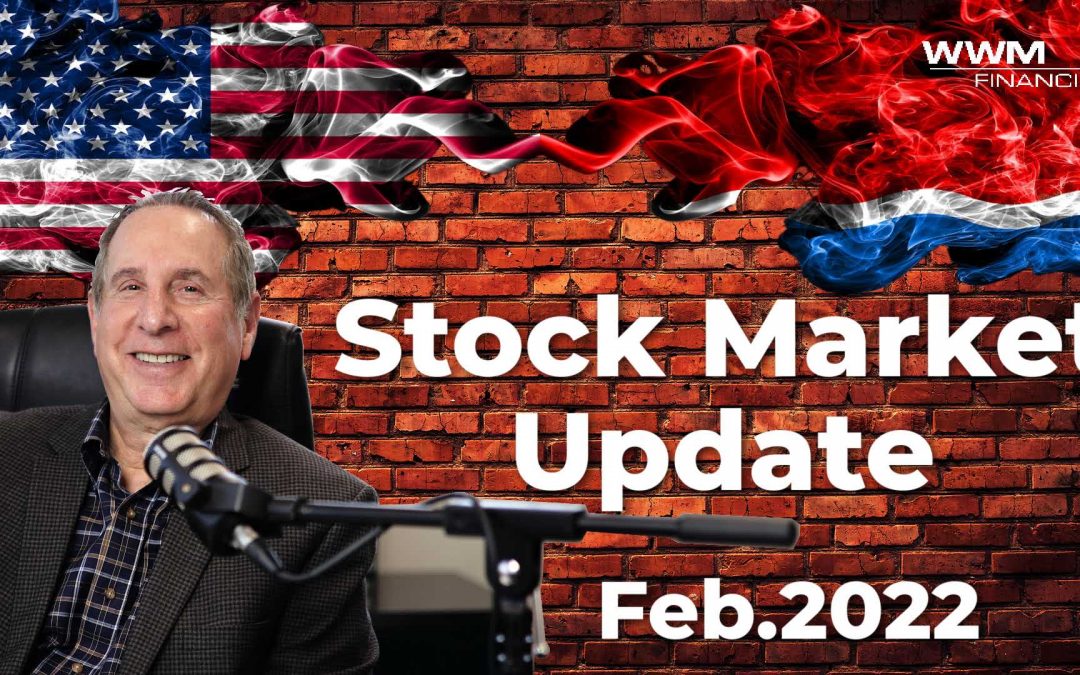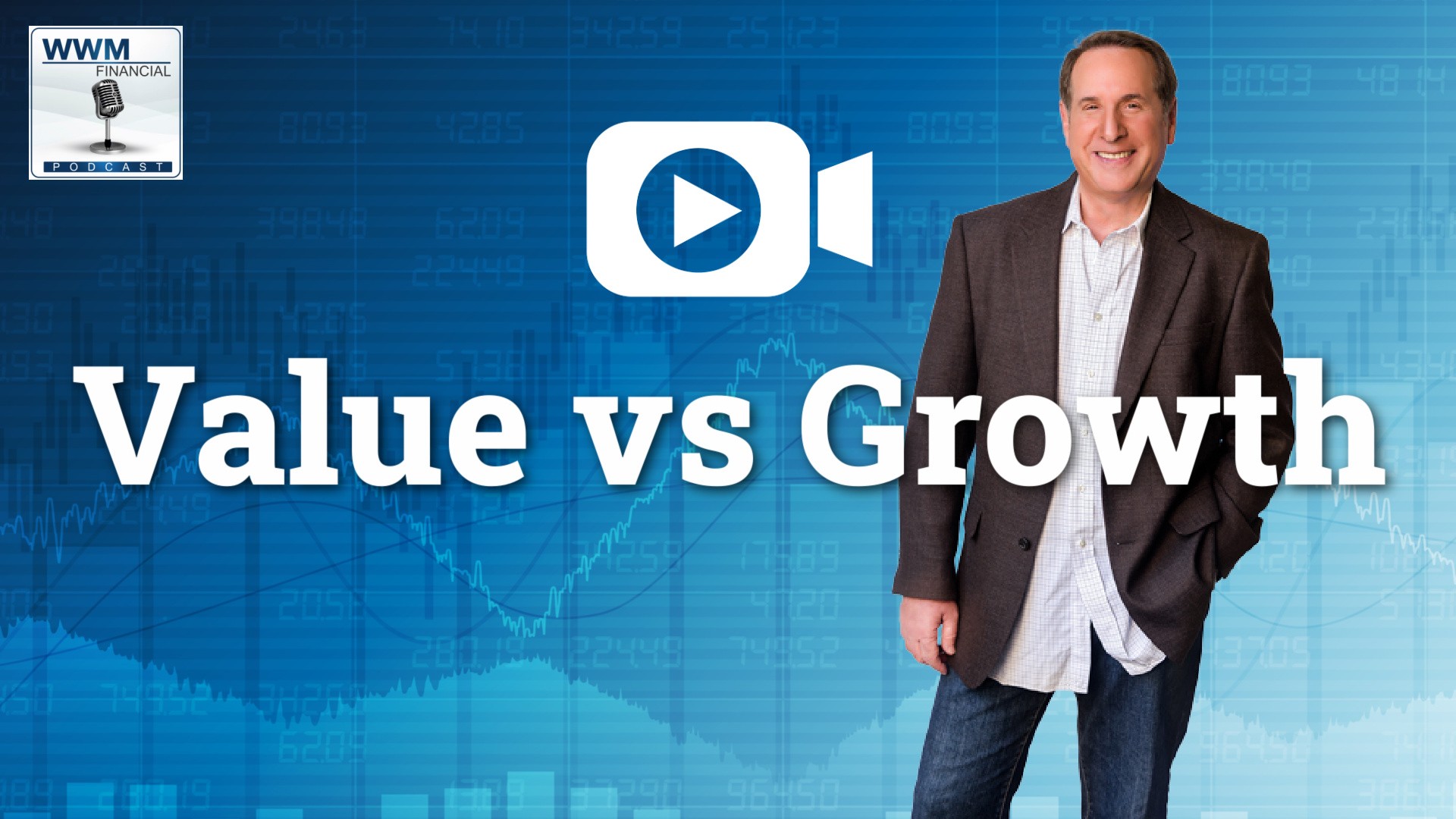
Stock Market Update | April 2022
Click on the image above to view this video.
Stock Market Update April 4th, 2022
Wondering why the market rallied so much in March of 2022, how rising interested rates has historically affected the stock market, and which kind of investments have provided the greatest returns? Tune in for this month’s Stock Market Update with Steve Wolff as he answers these burning questions. 
FREE Report: 5 Investing Secrets Every Investor Needs to Know
Avoid making bad investment decisions. This little-known report reveals 5 better ways to invest in stocks.
To get your free report: Click Here.
Learn 5 simple steps to avoid making bad investment decision.
Reference Sources:
After a key yield curve inversion, stocks typically have another year and a half before doom strikes
March, First Quarter 2022 Review and Outlook
DISCLAIMER:
WWM Financial is an SEC- Registered Investment Adviser. Advisory services are only offered to clients or prospective clients where WWM Financial and its representatives are properly licensed or exempt from licensure. Investing involves risk and possible loss of principal capital. No advice may be rendered by WWM Financial unless a client service agreement is in place.
Full Transcription Below:
Steve Wolff:
This is Steve Wolff with the Monthly Market Report for March of 2022. Talk about March Madness. This is one of the weirdest months that I’ve seen in a long time. In the middle of March, things turned around for this market. Matter of fact, this market to me was bananas. Just bananas.
Steve Wolff:
What happened is, in the beginning of the month, the markets were going down and they were going down precipitously, as they had been doing for the first part of the year, especially the small stocks, especially the growth stocks.
Steve Wolff:
Well, March 15th came and the Ides of March I guess that must have done it for those of you who are Shakespeare aficionados, you’ll know what I’m talking about. For others of you, it was the middle of March, and the stocks wow they turned around. So before I get to all the things that happened in there, I want to give a little disclaimer here which we have to do for every one of these videos that we do.
Steve Wolff:
What I am about to say is strictly for informational purposes and it’s not meant to be recommendation. So before you buy or sell anything relating to anything I am saying about the markets or individual securities or maybe even the game that is going to be on tonight, be sure to consult your financial advisor. It’s probably best for your personal situation and you can make…he can make a recommendation or she can make a recommendation for you.
Steve Wolff:
By the way, there is a game tonight by the time you see this, this game will be over. But it’s March madness Kansas is playing against North Carolina and it is going to be a barn burner. In the meantime, what happened in March? For the month of March the S&P was up about 3.6%, the DOW was up about 2.2% and the NASDAQ was up about 3%.
Steve Wolff:
But for the quarter so January, February, March the S&P was down about 4.9%, the DOW was down about 4.6% and the NASDAQ was down about 9%. Now that only tells part of the story, because the small stocks and the growth stocks but especially the small stocks were down by a lot more. In the first quarter the Russel Growth 1000 which is a thousand stocks that were growth oriented were down about 9%. And the 2000, the Russel Growth 2000 stock index was down about 13%.
Steve Wolff:
Now the Microcap stocks based on the Russel Microcap Index was down about 15% for the quarter but both the Russel 2000 and the Microcap Russel Index were up about 1% for the month of March. So putting it, there’s a lot of statistics that I’m giving you. Putting it another way things were really coming down and then there was a rebound. Starting the middle of March a lot of these stocks came back.
Steve Wolff:
Here is something that, that’s an interesting statistic. At the lows the NASDAQ, the Russel 2000 which is small caps and the Microcaps were down a lot, and this is from their 52 week highs. The NASDAQ from its 52 week high which was around the middle of November and peaked out or you know valleyed out, whatever you want to call it, at 20% down in March. The Russel 2000 was down by about 23% and the small cap microcap index, Russel Index was down 25% from its high to its low. So they did make a nice rebound at the end of March.
Steve Wolff:
Fortunately that happened so the quarter itself really wasn’t as bad as it could have been. Dividend stocks were a great place to be and have been a great place to be and I think the fact that the dividends keep coming in they keep- A lot of companies keep raising their dividends has been a terrific thing to happen. In the meantime, Ukraine keeps going on as far as the war with Russia, there’s a lot of stuff going on there. Russia we thought, a lot of people thought would win that war in days we are now up to something like 40 or 45 days now since this started. And Russia is now pulling back a little bit. I think, from what I’m hearing, they may be regrouping who knows what’s going to happen again.
Steve Wolff:
Between that and inflation, the oil price has been up. It’s been a tough place for the individual small investor. Matter of fact I think the small guys are getting hurt a lot because I just filled up my car with gas and around here, even at Costco, the gas was about five dollars and 50 cents a gallon. So, that is hurting people. Also the FED in March started raising interest rates. How much that’s going to go from here I don’t know, how many times they are going to raise it I don’t know. But I would think it’s going to be a few times.
Steve Wolff:
Well between raising of interest rates and higher inflation, higher oil prices the little guy is really getting squeezed. The interesting thing that’s happening right now is the interest rate curve is starting to invert. In other words a normal curve is when rates are set the near-term rates are usually lower than the long-term rates because there’s more risk in the long term rates.
Steve Wolff:
But right now it looks like it’s starting to go another way. The two year bond is now actually higher than the ten year. So as far as interest rates are concerned that’s concerning for a lot of people, because when a curve gets inverted,a lot of times that means that there’s going to be a recession at some point in the future. Now it’s not a guarantee but it does happen. And it happens more often than not.
Steve Wolff:
Now what does that mean as far as the stock market is concerned? The interesting part about that, from an article that I just read, from the time that the yield curve actually inverts and we are still not quite there because the really short term treasuries are still lower than the long. So the curve is going in your direction this way, instead of this way. So, when it starts going the other way that’s when we are going to worry about it. The interesting thing about stocks is that it takes about seven months to maybe up to three years, from what I’ve just read, before we actually go into a recession.
Steve Wolff:
In the meantime, stocks have actually done well, historically, during the time from the time that rates invert to the time that the recession actually happens. My opinion is that a lot of the stocks, especially the growth and small stocks have already put in a pretty good sized loss and maybe the bottom, I think it could be the bottom where we hit in the middle of March. Doesn’t mean that stocks can’t pull back gain. But that was pretty significant for many, many stocks.
Steve Wolff:
The value stocks help up better, the dividend stocks held up better so we will see what happens. In the meantime whether we going to be in a bull or bear market obviously we’ve had a bear market in parts of the market, meaning bear market meaning things are down. The bull, from last time you saw me was down like this and he’s kind of sitting up again, who knows maybe we’ll get back to bull market who knows.
Steve Wolff:
I do have a fortune telling little crystal ball here that my wife gave me many years ago and it’s got a bull and a bear here. If I could look into it and really see what the future is going to be I could tell you, but it’s still kind of cloudy. But it does say something about Auntie Almond here and Dorothy and Kansas who is playing tonight in case I didn’t tell you that. You already know who won, but I’m rooting for Kansas so we will see what happens. In the meantime we’ll see what happens in April, I have no Idea what will happen in this month hopefully it will be a good month.
Steve Wolff:
By the way April is the best month of the entire year for stocks, historically. Now whether that happens this year or not, who knows. But April has always been a good month. Unless, you are paying a lot of taxes, which a lot of us are. In the meantime, I will see you next month where we will recap March. Now until then, happy investing.










